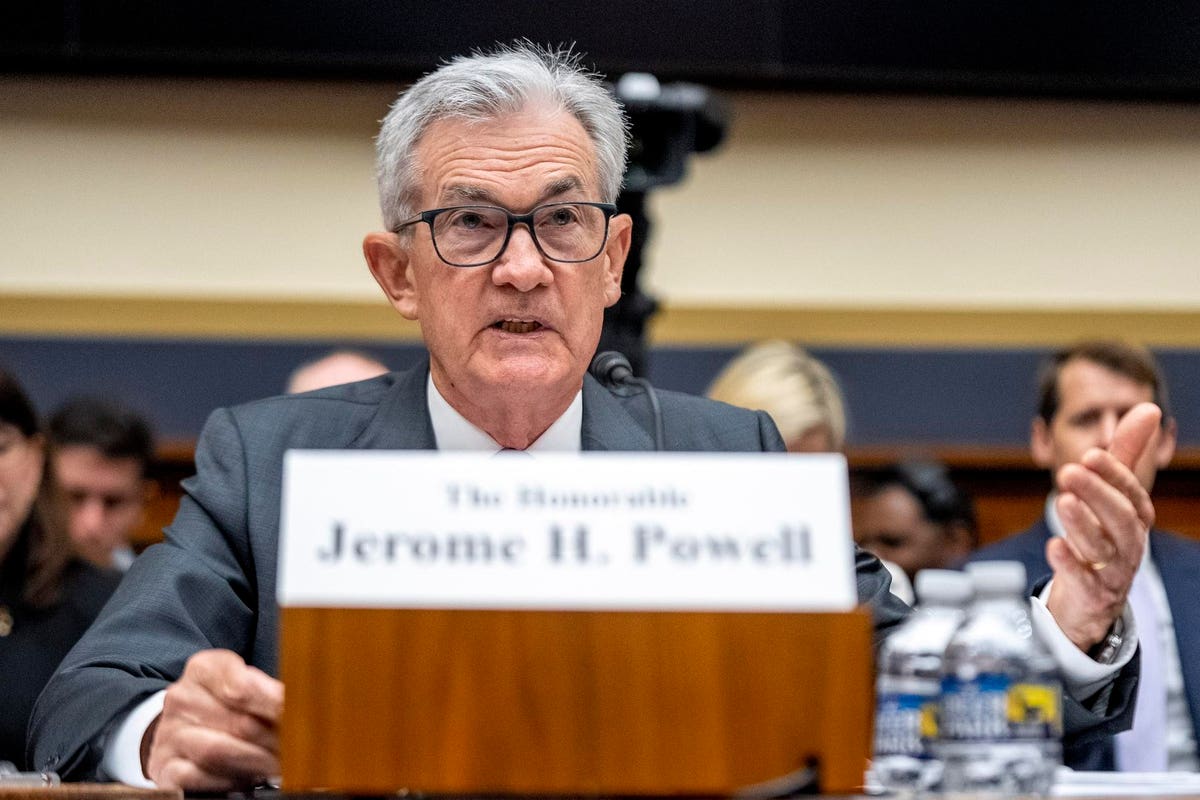The U.S. Federal Reserve is currently expected to raise rates again when it sets rates on July 26, with a small chance of holding rates steady. A rise in rates would be consistent with market expectations, the Fed’s own projections and recent statements from officials.
The jobs market remains robust giving the economy some ability to withstand the inflation fight. In addition, the Fed remains concerned that inflation is not returning fast enough to its 2% target. For example, PCE inflation, often regarded as the Fed’s preferred measure, did fall to a 3.8% annual rate in May, though excluding food and energy the annual rise in prices was greater at 4.6%. That’s still a long way from 2%.
What To Watch For
The key things to watch for will be any clues that the Fed is becoming more confident that the 2% target will be hit. Inflation data has generally improved and leading indicators, such as wage trends and the housing market, are more encouraging for those looking for lower inflation. Still, the Fed continues to talk about a drawn out inflation battle.
Also, though the Fed manages expectations for upcoming meetings quite carefully to avoid surprising markets, making a July hike probable, later meetings are more data dependent. The Fed expects to make two hikes in 2023 per their latest projections from June. Markets are more skeptical on a potential second hike in the fall, so both the Fed’s comments and inflation and jobs data leading up to the meeting could prove informative. A second hike, if warranted, might be expected to come in November, but the Fed hasn’t spoken about that move, or the timing, in any detail yet.
Whether Powell can maintain consensus among policymakers is increasingly relevant. The latest Summary of Economic Projections from the Fed imply that not all policymakers are on board with raising rates again in 2023. Some disagreement on further hikes may naturally imply we are close to the top of the interest-rate cycle. This may become more of an issue if the Fed looks to make two hikes in the remainder of the year. There is a material group of policymakers who currently prefer a single hike, based on June economic projections, though that could change.
Lastly, with the July decision the Fed will be over halfway through its 2023 scheduled meetings, and the focus may start to turn to 2024 to a greater degree. Similar to 2023, the broad picture is that the Fed expects to maintain high rates to beat inflation, and also similar to 2023, the market is more skeptical.
For 2023 so far, the Fed has won out over the market. Basically, core inflation has proven hard to tame, even though headline inflation has dropped. Importantly the jobs market has remained strong enough to enable the Fed to fight inflation with limited concerns of causing a recession, even though the inverted yield curve might suggest otherwise.
Powell’s Comments
In testimony before Congress on June 21, Fed Chair Jerome Powell said, “Nearly all FOMC participants expect that it will be appropriate to raise interest rates somewhat further by the end of the year.” He also said that the inflation fight, “has a long way to go.” In addition, in a press conference after the June interest-rate decision, Powell referred to holding rates steady as a “skip”, implying that we could see rates move up again in July. This suggests a hike for a July is likely, though the Fed’s plan beyond that in terms of potential rate hikes is less clear.
Market Assessments
Markets broadly agree. The CME’s FedWatch Tool which measures market expectations of Fed moves, sees an over eight in ten chance that a hike is coming on July 26. If that were to occur it would take short-term rates up to 5.25%-5.5%. That said, it is not clear that every Fed participant shares this view, for example from the Fed’s Summary of Economic Projections from June 14, it appears that two policymakers forecast holding rates steady from here until the end of 2023, though all others do see rates moving higher to varying degrees before year end.
So it seems likely that the Fed will raise rates in July, though more clues will come from Fed statements over the coming weeks. Of course important inflation and jobs releases for June that will come before the Fed meets that could alter the Fed’s thinking too. The bigger question is if there’s one more hike coming after that in 2023, and how long the Fed intends to hold rates at currently high levels for.
Read the full article here


